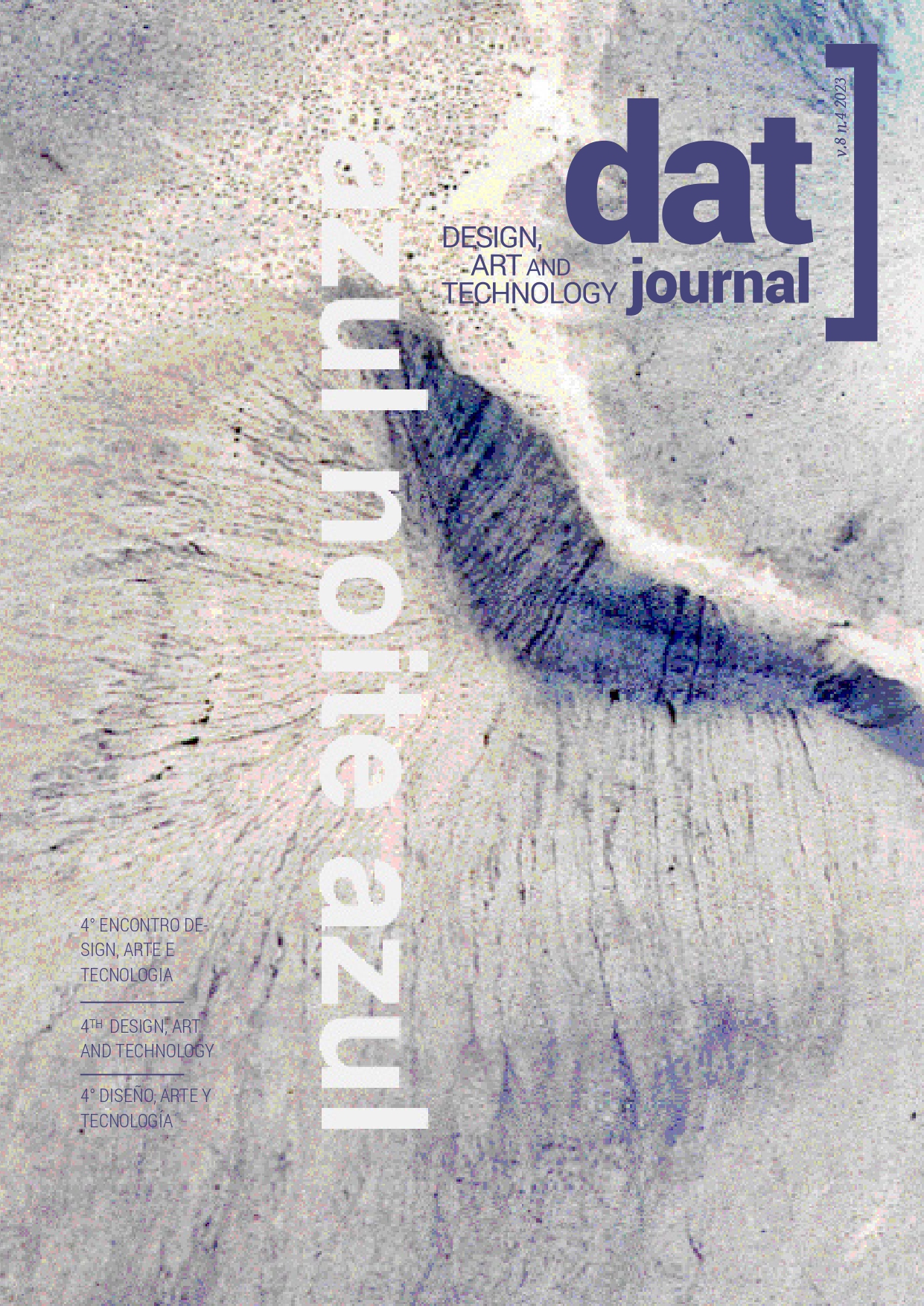Biological structures scanning in design of tactile instructional material for visually impaired people
DOI:
https://doi.org/10.29147/datjournal.v8i4.716Keywords:
Assistive Design, Assistive Technology, 3D scanning , Courseware, InclusionAbstract
Assistive Design is characterized by the development of Assistive Technologies, which promote functionality and inclusion of people with disabilities. The development of instructional material for teaching people with visual impairment can occur through the new technologies of 3D scanning and printing. This study aimed to develop tactile instructional material, based on snake biological structures. Skulls, heads, scales and tails of different species were scanned. The digital files were edited in specific software. Procedures of verification and analysis of the factors and parameters that imply in a better definition and accuracy of the virtual models were described, controlling the dimensional relation with the perception of details such as scales and anatomical format. The prototypes were obtained by 3D printing technology, allowing the analysis of factors and parameters that implied in a better accuracy of the details; besides the possibility of validation of the use interaction (effectiveness and efficiency) in educational conditions.
Downloads
References
ARCAND, K. K. et al. Touching the stars: improving NASA 3D printed data sets with blind andvisually impaired audiences. Journal of Science Communication, Trieste, v. 18, n. 4, p. 1-22, 2019. Disponível em: https://jcom.sissa.it/sites/default/files/documents/JCOM_1804_2019_A01.pdf. Acesso em: 4 abr. 2022 DOI: 10.22323/2.18040201 DOI: https://doi.org/10.22323/2.18040201
ARES, M., ROYO, S., VIDAL, J., CAMPDERRÓS, L., PANYELLA, D., PÉREZ, F., GONZÁLEZ BALLESTER, M. A. 3D Scanning System for In-Vivo Imaging of Human Body. In: Osten, W. (eds) Fringe 2013. Springer, Berlin, Heidelberg, p.899-902. 2014. DOI: 10.1007/978-3-642-36359-7_168 DOI: https://doi.org/10.1007/978-3-642-36359-7_168
BRASIL. [Constituição (1988)]. Constituição da República Federativa do Brasil. Brasília, DF: Palácio do Planalto, 1988. Disponível em: https://www.planalto.gov.br/ccivil_03/constituicao/constituicao.htm. Acesso em: 20 março 2023.
BRULÉ, E. et al. MapSense: multi-sensory interactive maps for children living with visual impairments. In: CONFERENCE ON HUMAN FACTORS IN COMPUTING SYSTEMS, may 2016, San José, California, USA. Proceedings [...]. New York: Association for Computing Machinery, 2016. DOI: 10.1145/2858036.2858375 DOI: https://doi.org/10.1145/2858036.2858375
D´APUZZO, N. State of the art of the methods for static 3D scanning of partial or full human body. Proceedings of Conference 3D Modelling. Paris. June 13-14. 2006.
DEZEN-KEMPTER, E.; SOIBELMAN, L.; CHEN, M.; MÜLLER FILHO, A. V. Escaneamento 3D a laser, fotogrametria e modelagem da informação da construção para gestão e operação de edificações históricas. Gestão & Tecnologia de Projetos, v. 10, p. 113-168, 2015. DOI: https://doi.org/10.11606/gtp.v10i2.102710
DIGITAL LIFE. Digital Life: creating accurate 3d models of life on earth. In: http://digitallife3d.org Acessado em: 26 mai. 2022.
HALEEM, A., & JAVAID, M. 3D scanning applications in medical field: A literature-based review. Clinical Epidemiology and Global Health. 2018. DOI:10.1016/j.cegh.2018.05.006 DOI: https://doi.org/10.1016/j.cegh.2018.05.006
HU, P., LI, D., WU, G., KOMURA, T., ZHANG, D., ZHONG, Y. Personalized 3D mannequin reconstruction based on 3D scanning. International Journal of Clothing Science and Technology, 30(2), 159–174. 2018. DOI: 10.1108/ijcst-05-2017-0067. DOI: https://doi.org/10.1108/IJCST-05-2017-0067
KUS, A.; UNVER, E.; TAYLOR, A. A comparative study of 3D scanning in engineering, product and transport design and fashion design education. Computer Applications in Engineering Education, 17, 263-271. 2009. DOI: https://doi.org/10.1002/cae.20213 DOI: https://doi.org/10.1002/cae.20213
POKHARNA, P.P.; GHANTASALA, M.K.; ROSHKOVA, E.A. 3D printed polylactic acid and acrylonitrile butadiene styrene fluidic structures for biological applications: Tailoring bio-material interface via surface modification. Materials Today Communications, 27 , 102348, 2021. DOI: https://doi.org/10.1016/j.mtcomm.2021.102348. DOI: https://doi.org/10.1016/j.mtcomm.2021.102348
REYNAGA-PEÑA, C. G. A microscopic world at the touch: learning biology with novel 2.5d and 3d tactile models. Journal of Blindness Innovation and Research, Mexico, v.1, n. 5, p. 1-8, 2015. DOI: 10.5241/5-54. DOI: https://doi.org/10.5241/5-54
TRELEAVEN, P., & WELLS, J. 3D Body Scanning and Healthcare Applications. Computer, 40(7), 28-34. 2007. DOI:10.1109/mc.2007.225. DOI: https://doi.org/10.1109/MC.2007.225
ZUFFI, S.; KANAZAWA, A.; JACOBS, D.W.; BLACK, M.J. 3D Menagerie: Modeling the 3D shape and pose of animals. IEEE Conference on Computer Vision and Pattern Recognition (CVPR), p. 5524-5532, 2017. DOI: 10.1109/CVPR.2017.586 DOI: https://doi.org/10.1109/CVPR.2017.586
Downloads
Published
How to Cite
Issue
Section
License
Copyright (c) 2023 DAT Journal

This work is licensed under a Creative Commons Attribution 4.0 International License.


























